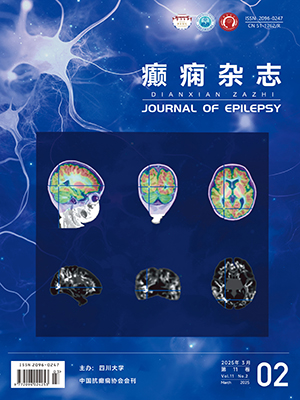| 1. |
Wirrell EC. Benign epilepsy of childhood with centrotemporal spikes.Epilepsia, 2007, 39(S4):32-41.
|
| 2. |
Loiseau P, Duché B, Cordova S, et al. Prognosis of benign childhood epilepsy with centrotemporal spikes:a follow-up study of 168 patients. Epilepsia, 1988, 29(3):229-235.
|
| 3. |
Hughes JR. Benign epilepsy of childhood with centrotemporal spikes (BECTS):To treat or not to treat, that is the question. EpilepsyBehav, 2010, 19(3):197-203.
|
| 4. |
ILAE. Proposal for revised classification of epilepsies and epileptic syndromes. Commission on Classification and Terminology of the International League Against Epilepsy.Epilepsia, 1989, 30(4):389-399.
|
| 5. |
You SJ, Kim DS, Ko TS. Benign childhood epilepsy with centro-temporal spikes (BCECTS):early onset of seizures is associated with poorer response to initial treatment. Epileptic Disord, 2006, 8(4):285-288.
|
| 6. |
Zhao X, Chi Z, Chi L, et al. Clinical and EEG characteristics of benign rolandic epilepsy in Chinese patients. Brain dev, 2007, 29(1):13-18.
|
| 7. |
Incecik F, Altunbasak S, Herguner OM, et al. Prognostic significance of failure of the initial antiepileptic drug in children with benign childhood epilepsy with centrotemporal spikes. Brain Dev, 2015, 37(1):66-70.
|
| 8. |
Kellaway P. The electroencephalographic features of benign centrotemporal (rolandic) epilepsy of childhood.Epilepsia, 2000, 41(8):1053-1056.
|
| 9. |
Fejerman N, Caraballo R, Tenembaum SN. Atypical evolutions of benign localization-related epilepsies in children:are they predictable? Epilepsia, 2000, 41(4):380-390.
|
| 10. |
Donald Shields W, Carter Snead O. Benign epilepsy with centrotemporal spikes.Epilepsia, 2009, 50(12):10-15.
|
| 11. |
Modi AC. Patterns ofNonadherence to Antiepileptic drug therapy in children with newly diagnosed epilepsy. JAMA, 2011, 305(16):1669.
|
| 12. |
Modi AC, Rausch JR, Glauser TA. Early pediatric antiepileptic drug nonadherence is related to lower long-term seizure freedom. Neurology, 2014, 82(8):671-673.
|




